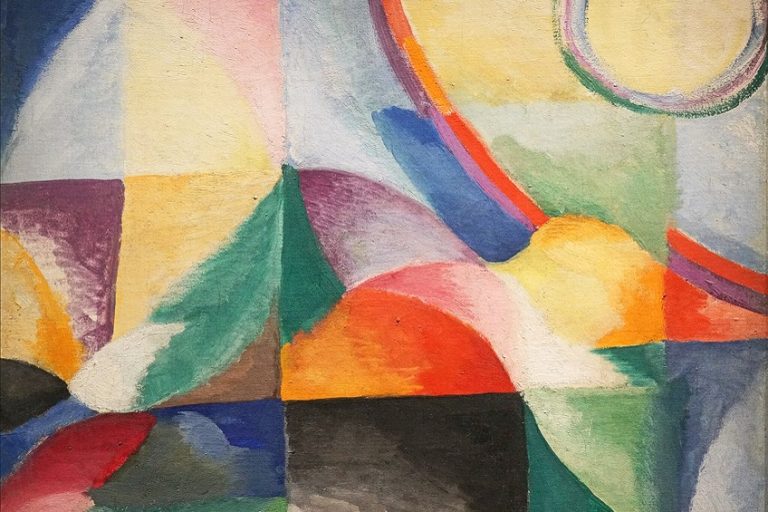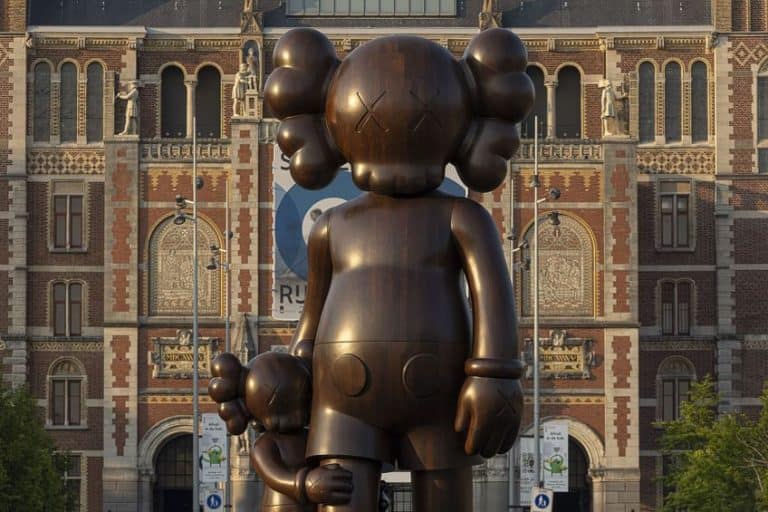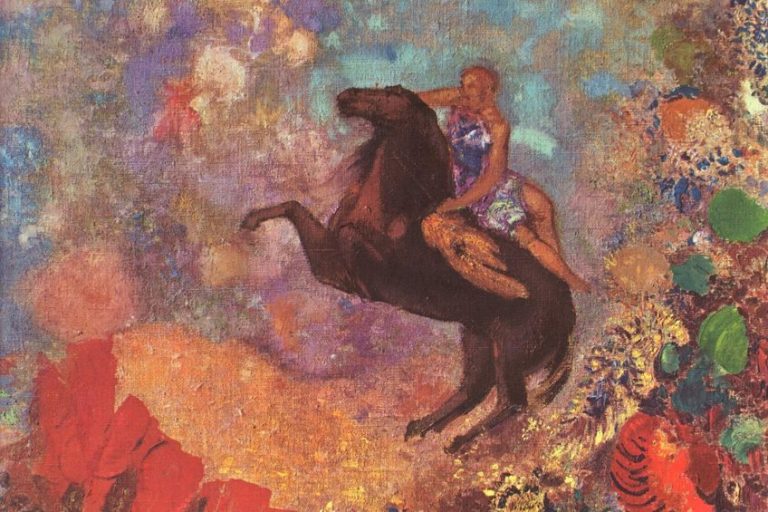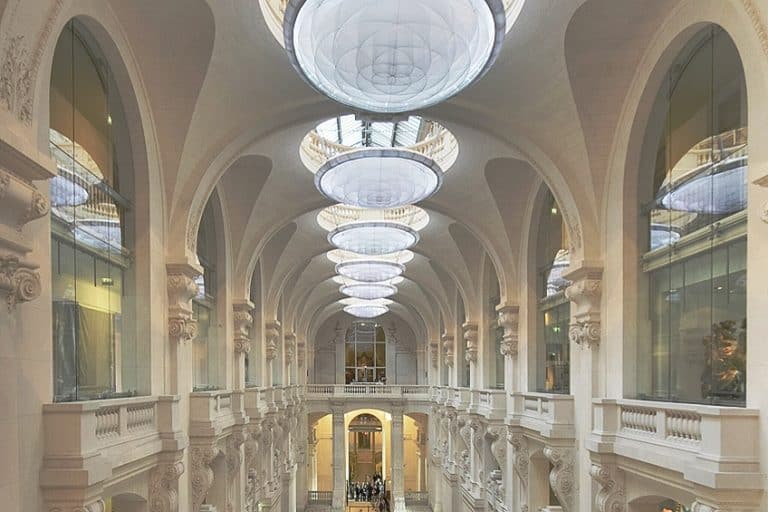Anish Kapoor – Exploring the Works of This Innovative Artist
Anish Kapoor, a name that resonates throughout the contemporary art world, is a multifaceted artist known for his captivating creations that seamlessly blur the boundaries between sculpture and painting. With a career spanning several decades, Anish Kapoor has left an indelible mark on the global art scene, captivating audiences with his innovative and thought-provoking works. In this article, we delve into the enigmatic world of Anish Kapoor, exploring the profound depth and complexity of his artistry as we unravel the mesmerizing interplay between Anish Kapoor’s paintings and sculptures. Who is Anish Kapoor, and what makes his art so compelling? Join us on a journey through the creative evolution of this remarkable artist, as we uncover the essence of his unique vision and artistic legacy.
Artist Abstract: Who Is Anish Kapoor?
| Date of Birth | 12 March 1954 |
| Date of Death | N/A |
| Nationality | British |
| Famous Artworks |
|
| Performance Themes | Beauty, analogy, and the ancient |
Anish Kapoor, a prominent figure in contemporary art, embarked on his artistic journey in the late 1970s, initially studying at the Hornsey College of Art in London. There, he began to develop his distinctive artistic voice. Born in Mumbai, India, in 1954, Kapoor’s upbringing and Indian heritage played a significant role in shaping his artistic sensibilities.
Kapoor furthered his education at the Chelsea School of Art and Design, which exposed him to a diverse range of artistic influences and ideas that would significantly shape his future work. During this period, he was deeply influenced by Minimalism, which emphasized simplicity, form, and materiality. This influence is palpable in his early geometric and minimalist sculptures from the late 1970s and early 1980s.
Throughout his career, Kapoor has achieved several significant milestones. His early works exhibited a fascination with pigment and geometry, creating abstract pigment sculptures that hinted at his future exploration of color and form. Notable among these works is 1000 Names (1979-1980).
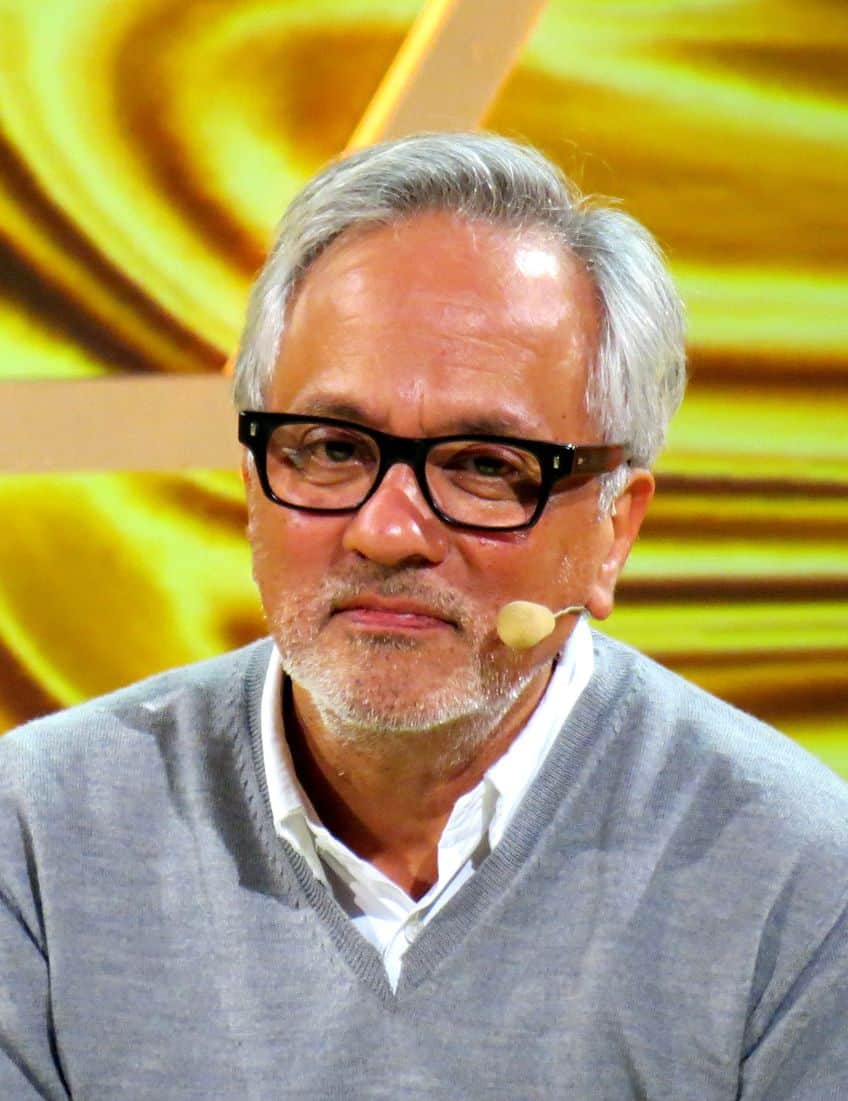
As the 1980s unfolded, Kapoor’s art evolved to include a focus on voids and negative space in his sculptures. Pieces such as Descent into Limbo (1992) and Shooting into the Corner (2008) challenged conventional perceptions of space and materiality, establishing Kapoor as a master of manipulating spatial dimensions.
However, Kapoor’s career truly skyrocketed with his monumental public commissions. Cloud Gate (2006) in Chicago’s Millennium Park, often referred to as The Bean, and Orbit (2012) in London’s Olympic Park are iconic examples. These sculptures not only highlight Kapoor’s technical prowess but also showcase his ability to engage the public on a grand scale, transforming urban landscapes into captivating artistic environments.
Anish Kapoor’s fascination with science and mathematics is also reflected in his meticulous approach to materials, geometry, and mathematical concepts, a characteristic that has become a hallmark of his work. Kapoor’s artistic journey is deeply intertwined with his exploration of spirituality and mysticism, influenced by his Indian roots.
Elements of the metaphysical and the sublime have been central themes in his art, creating a unique blend of cultural and philosophical influences in his work.
Anish Kapoor’s legacy in contemporary art is profound and multifaceted. He has redefined the possibilities of sculpture, pushing the boundaries of form, space, and materiality. His ability to evoke visceral emotional responses through his work has left an enduring mark on the art world. Kapoor’s exploration of voids, reflective surfaces, and the interplay of color and light has inspired a new generation of artists to stretch the limits of their chosen mediums.
Moreover, his iconic public sculptures have become cultural landmarks, inviting individuals from all walks of life to engage with art on a monumental scale. Anish Kapoor’s contributions have not only enriched our visual vocabulary but also challenged our perceptions of reality, establishing him as a true visionary in contemporary art.
Socio-Political Context of Anish Kapoor’s Art Development
The development of Anish Kapoor’s art has been intricately intertwined with the socio-political context of his time. Kapoor’s career began to take shape in the late 1970s and continued to evolve through subsequent decades, reflecting and reacting to various global and local socio-political dynamics.
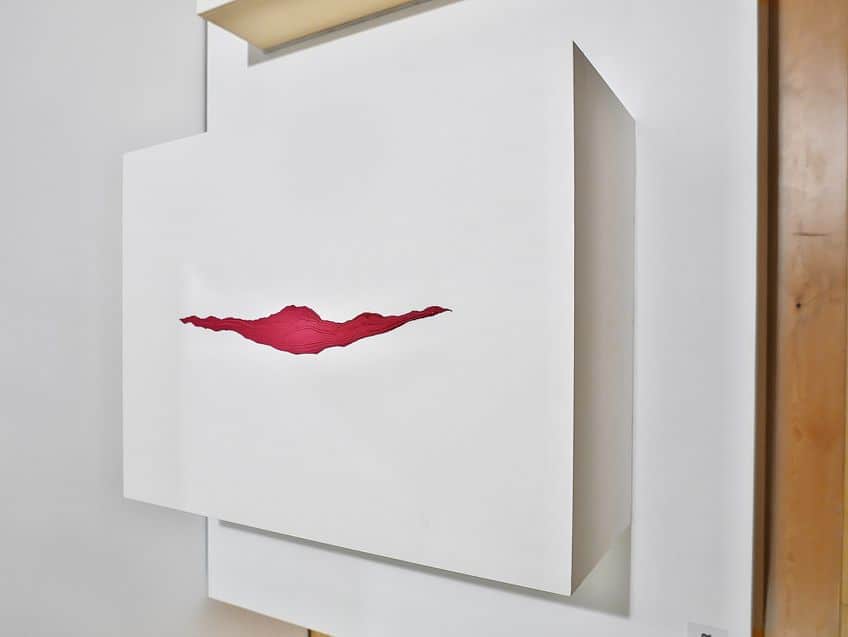
Multiculturalism and Identity
Kapoor’s Indian heritage and his relocation to the United Kingdom in the 1970s placed him in the midst of a multicultural and diverse society. This backdrop of multiculturalism and discussions surrounding identity and diaspora influenced Kapoor’s exploration of cultural and personal identity in his art.
His works often engage with themes of hybridity and the intersection of cultures.
Thatcherism and Economic Transformation
Kapoor’s formative years as an artist coincided with the era of Margaret Thatcher’s premiership in the UK. The political and economic changes of Thatcherism had a significant impact on the arts. Kapoor, like many artists of his generation, had to navigate the challenges posed by reduced public funding for the arts and a shifting cultural landscape.

Globalization and Contemporary Art
Kapoor’s rise to prominence in the 1980s and 1990s was set against the backdrop of increasing globalization. The art world became more interconnected, and artists like Kapoor gained international recognition.
His ability to create monumental sculptures and secure public commissions in different parts of the world reflects this globalized art market.
Postcolonial Discourse
As a postcolonial artist, Kapoor’s work has often been seen through the lens of postcolonial discourse. His exploration of voids, space, and the use of materials has been interpreted by some as a commentary on the voids left by colonial histories and the complexities of postcolonial identity.
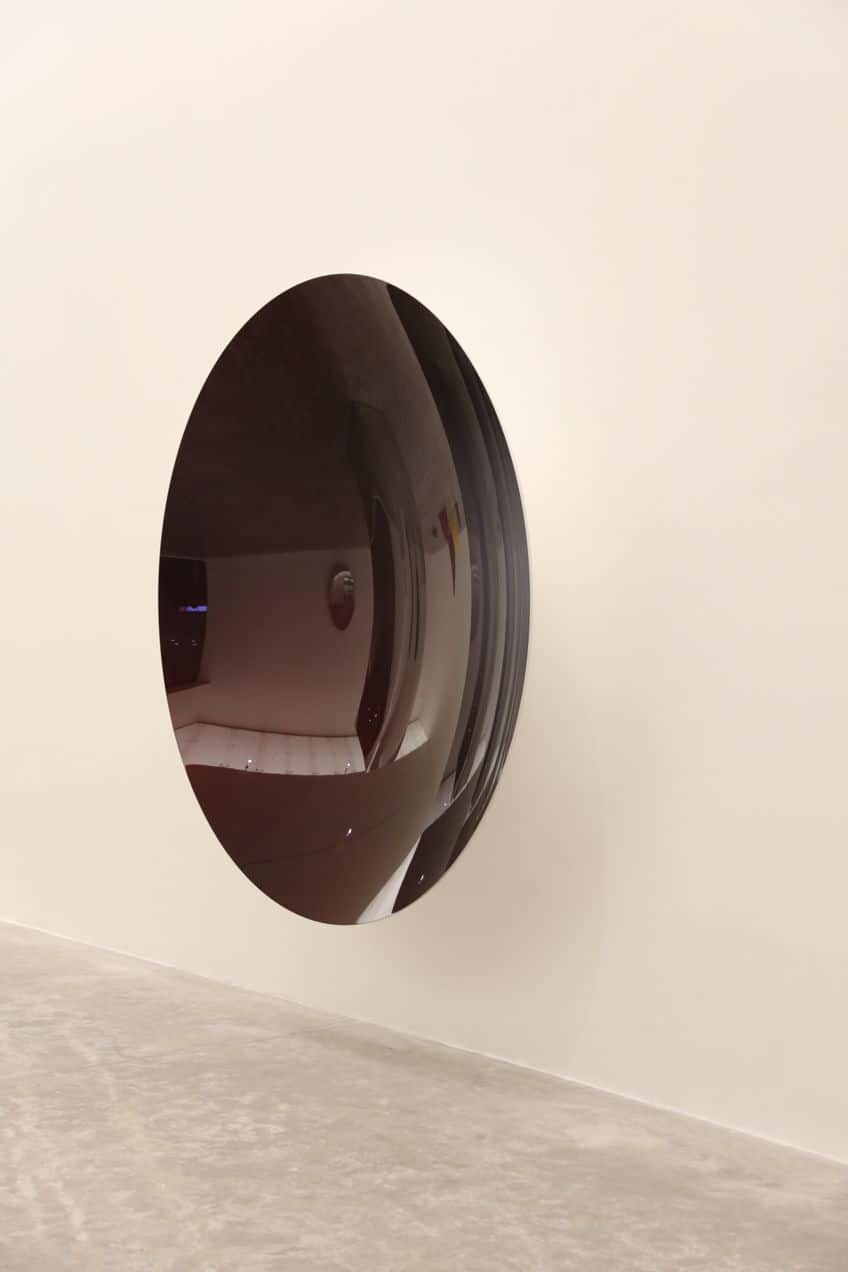
Socio-Political Activism
Kapoor has occasionally engaged in socio-political activism through his art. For instance, his 2015 work Dirty Corner at the Palace of Versailles sparked controversy and discussions about issues of race, colonialism, and national identity in France. After its installation, the artwork was defaced with offensive graffiti and racist slurs, sparking public outrage. The sculpture’s interpretation as a representation of female genitalia, coupled with its placement in the historically significant Versailles Palace, fueled debates about the appropriateness of its sexual connotations in such a culturally rich location. Furthermore, discussions emerged regarding cultural identity and national pride, as Kapoor’s British-Indian heritage and selection as a non-French artist for a prominent Versailles commission stirred debates about French cultural identity.
The controversy also raised broader questions about the balance between artistic freedom and cultural sensitivity, as Kapoor defended his work as an exploration of hidden aspects of history and identity, acknowledging that art could be challenging and provocative.
Technology and the Digital Age
Kapoor’s art has also evolved alongside the rapid advancements in technology and the advent of the digital age. This has allowed him to experiment with new materials and techniques, contributing to the evolution of his sculptural language.
Unveiling the Technical Marvels of Anish Kapoor’s Artworks
Anish Kapoor’s diverse body of work, ranging from monumental sculptures to vibrant pigment-based paintings, bears testimony to his mastery of various artistic techniques. In this exploration of Anish Kapoor’s artistry, we delve into the technical characteristics that define his groundbreaking artworks.
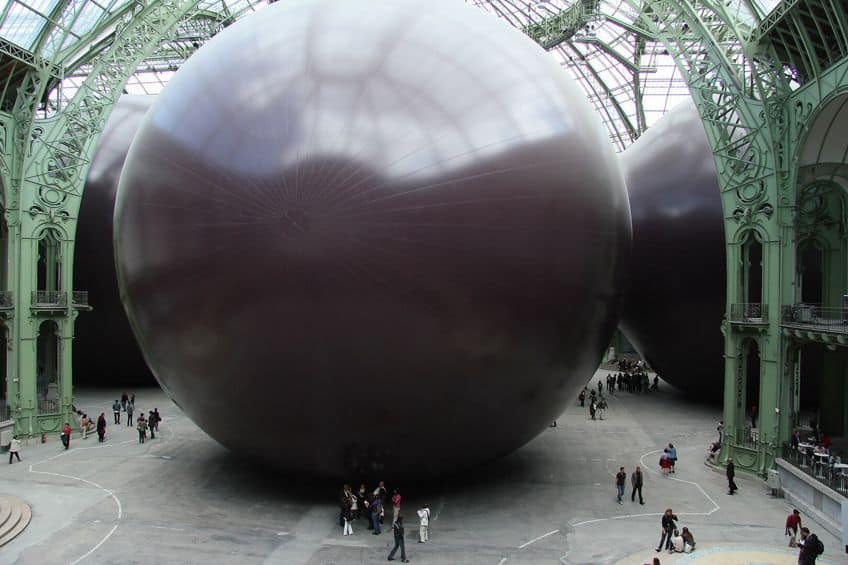
Mastery of Materials
One of the most striking aspects of Kapoor’s art is his relentless experimentation with materials. His sculptures often feature materials like stainless steel, granite, and wax, manipulated to create visually arresting forms. Kapoor’s ability to push the boundaries of what these materials can achieve is a testament to his technical prowess.
For instance, in Cloud Gate (2006) in Chicago, Kapoor transformed highly polished stainless steel into a seamless, reflective surface that mirrors its surroundings, captivating viewers with its optical illusion.
Color Manipulation
Kapoor’s fascination with color is evident in many of his artworks, particularly in his early pigment-based sculptures and paintings. He expertly blends pigments to create deep, immersive colors that seem to shift and transform as viewers move around his works. His meticulous use of color is evident in pieces like Mount Moriah at the Gate of the Ghetto (2022), where layers of pigment are meticulously applied to create a dynamic interplay of color and light.
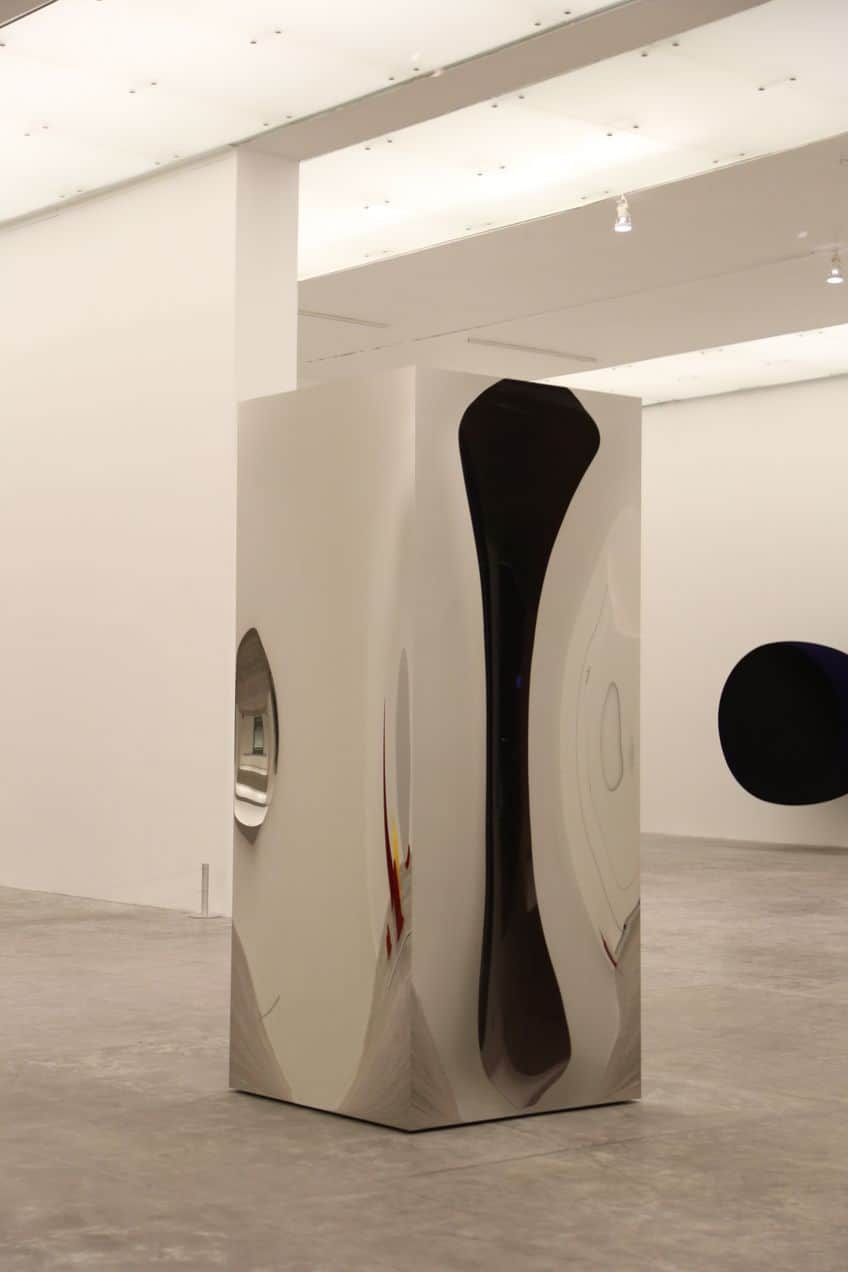
Exploration of Void and Space
Anish Kapoor’s exploration of voids and negative space in his sculptures is a hallmark of his technical innovation. Descent into Limbo (1992), for example, creates an optical illusion of a bottomless pit by employing a hole coated in the darkest black pigment, Vantablack. Kapoor’s careful application of this material absorbs almost all visible light, rendering the void seemingly infinite.
This manipulation of space challenges conventional notions of dimension and materiality.
Architectural Integration
Many of Kapoor’s monumental sculptures are designed to seamlessly integrate with architectural environments. This requires precise engineering and technical collaboration to ensure structural stability and aesthetic harmony. Kapoor’s ability to create sculptures that complement and enhance architectural spaces is evident in his works such as Orbit (2012) in London’s Olympic Park and Dismemberment, Site 1 (2009) in New Zealand.

Integration of Technology
As technology has advanced, Kapoor has incorporated it into his artistic practice. Computer-aided design and manufacturing techniques have allowed him to create intricate and precise forms that would have been challenging to achieve through traditional methods.
This integration of technology has expanded the possibilities of his sculptures and pushed the boundaries of artistic expression.
Play with Light and Reflection
Light and reflection are recurring elements in Kapoor’s artworks. His sculptures often feature curved, reflective surfaces that distort and amplify light, creating mesmerizing visual effects. Sky Mirror (2006) is a prime example, as its polished stainless steel surface interacts with the changing atmospheric conditions and surrounding environment, resulting in a dynamic and ever-shifting reflection.
Famous Anish Kapoor Sculptures to Know
Anish Kapoor’s sculptures, celebrated for their mesmerizing forms, innovative use of materials, and profound conceptual depth, have left an indelible mark on the art world. In this section of the article, we embark on a journey through some of the most famous Anish Kapoor sculptures, exploring the artistic vision and transformative power of each iconic work.
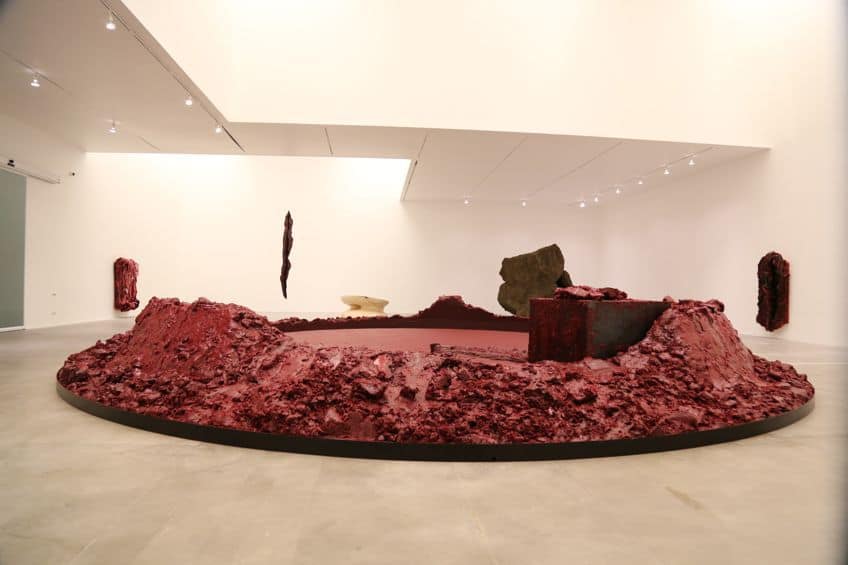
1000 Names (1979 – 1980)
| Title | 1000 Names |
| Date | 1979 – 1980 |
| Medium | Wood, drywall, and powder pigment |
| Dimensions (cm) | Variable |
| Location | Reina Sofia Museum, Madrid, Spain |
Anish Kapoor’s 1000 Names is a captivating sculptural installation that seamlessly fuses form, material, and color into a striking visual and conceptual experience. Created during a pivotal phase in Kapoor’s artistic journey, this artwork showcases his early fascination with pigment and geometry.
The installation comprises a series of irregularly shaped drywall forms, each meticulously coated with layers of rich and velvety red pigment. These forms possess an organic quality, resembling amoebic or cellular structures with their undulating contours and varied sizes. Their irregularity in shape and size instills a sense of dynamism and unpredictability, inviting viewers to explore the work from various angles.
Kapoor’s use of color is central to 1000 Names‘ visual impact.
The deep and intense red pigment, applied thickly, gives the forms a tactile and sensory quality. The uniform application of pigment creates a juxtaposition with the forms’ irregular surfaces, generating visual tension and blurring the line between sculpture and painting.
The arrangement of the forms is also integral to the artwork’s impact. They are stacked on top of one another in a manner that appears to defy gravity, encouraging viewers to engage with the space around the installation. This stacking introduces a sense of balance and instability, adding to the overall dynamism.
Conceptually, 1000 Names explores themes of identity, sensuality, material transformation, and abstract expressionism. The title suggests a multiplicity of identities or entities, while the rich red pigment and tactile quality evoke a sense of sensuality and embodiment. Kapoor’s meticulous application of pigment transforms the fiberglass forms, highlighting the transformative power of art and its ability to reshape our perception of materials. Moreover, the artwork’s vibrant color, tactile surfaces, and dynamic arrangement create an immersive experience that transcends aesthetics, inviting viewers to contemplate the human experience and the profound impact of art on our senses and emotions.
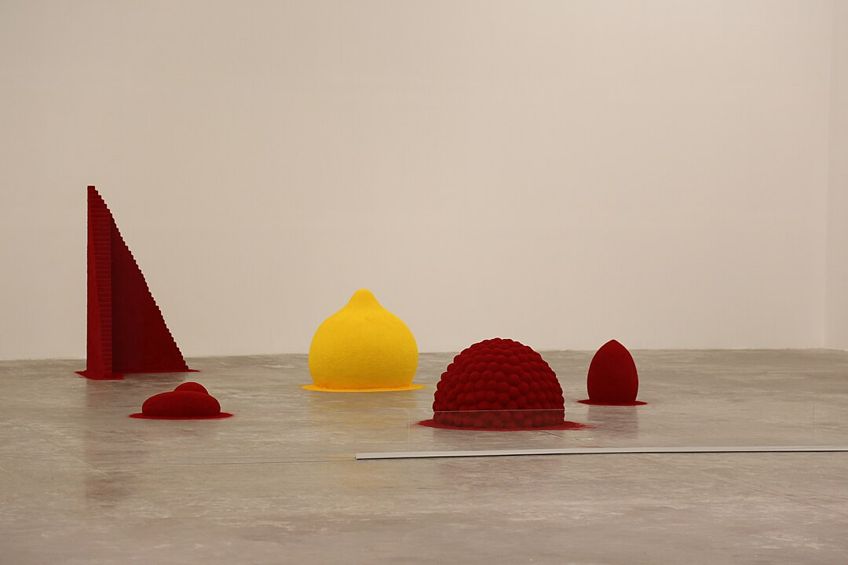
Descent into Limbo (1992)
| Title | Descent into Limbo |
| Date | 1992 |
| Medium | Concrete and pigment |
| Dimensions (cm) | 600 × 600 × 600 |
| Location | Serralves Art Museum, Porto, Portugal |
Anish Kapoor’s Descent into Limbo is a mesmerizing and thought-provoking sculptural installation that challenges conventional notions of space, perception, and materiality. This enigmatic artwork presents a striking visual experience through the following characteristics:
The central feature of Descent into Limbo is a seemingly bottomless, circular void that appears to plunge infinitely into darkness. This void is coated with Vantablack, a material known for its exceptional ability to absorb almost all visible light. As a result, the void appears as a “black hole” that absorbs all surrounding visual information, creating a disorienting and surreal effect.
Descent into Limbo is installed in a white-walled room, which sharply contrasts with the intense blackness of the central void. This stark juxtaposition amplifies the visual impact of the installation, drawing viewers’ attention to the profound contrast between light and darkness. Kapoor’s use of Vantablack challenges the viewer’s perception of space. When viewers approach the installation, it appears as though they are gazing into an impenetrable void.
The absence of visible depth creates an optical illusion, making it difficult to discern the actual depth of the void.
The circular shape of the void is geometrically precise, emphasizing Kapoor’s attention to form and precision in the creation of this artwork. The perfect circular shape, combined with the absolute darkness, enhances the feeling of a void that seems to defy the laws of physics.
The central theme of Descent into Limbo is the exploration of the infinite and the unknown. Kapoor’s use of Vantablack, a material that absorbs almost all light, creates the illusion of an infinite void. This invites viewers to ponder questions about the boundaries of human knowledge and perception, as well as the nature of the universe itself.
The title “Limbo” suggests a state of uncertainty or in-betweenness. This term has various interpretations, including references to a place between heaven and hell or a state of eternal waiting. Kapoor’s work prompts viewers to contemplate existential questions related to the human condition and the mysteries that lie beyond our comprehension.
Descent into Limbo challenges the reliability of human perception. It raises questions about how we interpret and make sense of the world around us. The disorienting visual experience underscores the idea that reality may be more elusive and complex than it initially appears.
Kapoor’s choice of Vantablack highlights the transformative power of art and materials. By using this super-black substance, he transforms physical space into a conceptual abyss, demonstrating how art can reshape our understanding of reality and our relationship with the material world.
Cloud Gate (2006)
| Title | Cloud Gate |
| Date | 2006 |
| Medium | Stainless steel |
| Dimensions (cm) | 1000 x 2000 x 1300 |
| Location | Millennium Park, Chicago, United States |
Anish Kapoor’s Cloud Gate, often affectionately referred to as “The Bean,” is an iconic and monumental sculptural installation that graces Chicago’s Millennium Park. This striking work of art captivates viewers with its unique visual characteristics.
The most distinctive feature of Cloud Gate is its highly polished stainless steel surface, which is meticulously crafted to achieve a mirror-like finish. The sculpture reflects its surroundings, including the city’s skyline, the park’s landscape, and the people who visit it. This reflective surface creates an immersive experience, as viewers become an integral part of the artwork.
The sculpture takes on an amorphous, organic shape resembling a massive, elongated drop of liquid mercury. This shape is both fluid and dynamic, with its curves and undulations inviting viewers to explore it from different angles. Kapoor’s attention to detail is evident in the seamless construction of the sculpture. The stainless steel plates are seamlessly joined, creating the illusion of a single, continuous surface.
This meticulous craftsmanship contributes to the sculpture’s overall sense of unity and cohesion.
The reflective surface of Cloud Gate serves as a metaphor for reflection and self-discovery. Viewers see themselves mirrored in the sculpture, inviting introspection and contemplation of their own identity. The artwork becomes a mirror through which individuals explore their relationship with the urban environment and the world around them.
Cloud Gate is seamlessly integrated into the urban landscape of Chicago. Its reflective surface captures and distorts the city’s skyline, surrounding buildings, and the passing clouds. This integration symbolizes the harmonious coexistence of art and the urban environment, emphasizing the transformative power of public art in enhancing the urban experience.
The sculpture’s scale and reflective properties encourage public interaction. Visitors often gather around it, taking photographs, touching its surface, and interacting with the reflections of others. This communal engagement fosters a sense of shared experience and connection among diverse individuals.
The reflective surface captures the passage of time and the ever-changing environment. The play of light, weather, and seasons creates a dynamic and evolving visual experience. Cloud Gate invites viewers to contemplate the transient nature of existence and the impermanence of the world around them.
Exploring the Complex Reception of Anish Kapoor’s Artwork
Anish Kapoor has always been a polarizing and thought-provoking artist. His works, which range from mesmerizing sculptures to enigmatic installations, have elicited diverse reactions from critics and audiences alike. In this article, we delve into the complex reception of Kapoor’s artwork, highlighting both praise and critique from prominent critics.
Here follows some praise for Kapoor’s art:
- Sensual and engaging: Kapoor’s art often garners praise for its sensory and engaging qualities. Critic Jerry Saltz has described Kapoor’s work as “immediate and primal,” noting that it engages the viewer on a visceral level. The rich colors, reflective surfaces, and tactile materials in Kapoor’s sculptures invite viewers to immerse themselves in the artwork, creating a unique and unforgettable experience.
- Architectural integration: Kapoor’s ability to seamlessly integrate his sculptures into architectural spaces has also been commended. Critic Roberta Smith, writing for The New York Times, has praised Kapoor for his “striking public sculptures” that not only enhance urban environments but also engage viewers in a dialogue with their surroundings. Kapoor’s sculptures, such as Cloud Gate in Chicago’s Millennium Park, have become iconic landmarks, drawing visitors from all over the world.
- Emotional impact: Kapoor’s art is often lauded for its emotional impact. Critic Adrian Searle, in The Guardian, has noted that Kapoor’s works “touch on the most basic human emotions and experiences.” Whether it’s the disorienting void of Descent into Limbo or the mesmerizing reflections of Cloud Gate, Kapoor’s art has the power to evoke deep and diverse emotional responses from viewers.
Anish Kapoor’s art has not been without its share of critique. While he has garnered widespread acclaim for his innovative and captivating sculptures, his success has also generated discussions about commercialization, accessibility, and political engagement. Here are some critiques and controversies about Kapoor’s art:
- Commercialization of art: Kapoor’s success and prolific output have raised questions about the commercialization of art. Some critics argue that Kapoor’s large-scale public commissions, which can command substantial budgets, highlight the commodification of contemporary art. This has sparked debates about the relationship between art, commerce, and the art market.
- Lack of accessibility: Kapoor’s monumental works, while celebrated for their grandeur, have also faced criticism for their lack of accessibility. Some argue that these massive sculptures can feel imposing and exclusive, potentially alienating viewers who may not have access to cultural institutions or urban environments where Kapoor’s works are often displayed.
- Political controversies: Anish Kapoor’s sculptures have occasionally been embroiled in political controversies. For example, his sculpture Dirty Corner at the Palace of Versailles sparked debates about issues of race, colonialism, and national identity in France. Kapoor’s willingness to engage with such politically charged themes has led to both praise and criticism.

In conclusion, Anish Kapoor, a luminary in the realm of contemporary art, has left an indelible mark through his captivating creations that seamlessly merge the boundaries between Anish Kapoor paintings and Anish Kapoor sculptures. He is a visionary artist who has continually pushed the envelope of artistic expression, enticing viewers with his meticulous use of materials, exploration of form and void, and profound engagement with the human experience. Kapoor’s ability to evoke emotion, provoke thought, and transform urban landscapes with his monumental works like Cloud Gate (2006) is a testament to his enduring legacy. As we continue to reflect upon the rich tapestry of his career, we find in Anish Kapoor a profound and enigmatic artist whose artistry resonates deeply in the hearts and minds of those who encounter it, challenging us to see the world anew.
Frequently Asked Questions
How Did Anish Kapoor Get the Rights to Vantablack?
Anish Kapoor’s acquisition of the rights to use Vantablack, one of the darkest substances known to science, created a significant buzz in the art world. The process involved collaboration with Surrey NanoSystems, the company that developed Vantablack. Kapoor worked closely with the material’s inventors and secured exclusive artistic rights to use Vantablack in his artwork. This arrangement allowed him to incorporate Vantablack into his works, such as Descent into Limbo (1992), where the material’s light-absorbing properties created the illusion of an infinite void. The exclusivity of Kapoor’s agreement with Surrey NanoSystems generated considerable attention and debate within the art community, highlighting the intersection of art, technology, and intellectual property rights.
What Is Anish Kapoor Famous For?
Anish Kapoor is famous for his groundbreaking and innovative contributions to contemporary art, particularly for his mesmerizing sculptures and installations. He is renowned for his ability to create artworks that engage viewers on a sensory and emotional level, often using materials like stainless steel and Vantablack to manipulate light, form, and space. Kapoor’s iconic works, including Cloud Gate (2006) in Chicago’s Millennium Park and Descent into Limbo (1992), have left an indelible mark on the art world, solidifying his reputation as a visionary artist who challenges conventional boundaries and perceptions in art.
Nicolene Burger is a South African multi-media artist, working primarily in oil paint and performance art. She received her BA (Visual Arts) from Stellenbosch University in 2017. In 2018, Burger showed in Masan, South Korea as part of the Rhizome Artist Residency. She was selected to take part in the 2019 ICA Live Art Workshop, receiving training from art experts all around the world. In 2019 Burger opened her first solo exhibition of paintings titled, Painted Mantras, at GUS Gallery and facilitated a group collaboration project titled, Take Flight, selected to be part of Infecting the City Live Art Festival. At the moment, Nicolene is completing a practice-based master’s degree in Theatre and Performance at the University of Cape Town.
In 2020, Nicolene created a series of ZOOM performances with Lumkile Mzayiya called, Evoked?. These performances led her to create exclusive performances from her home in 2021 to accommodate the mid-pandemic audience. She also started focusing more on the sustainability of creative practices in the last 3 years and now offers creative coaching sessions to artists of all kinds. By sharing what she has learned from a 10-year practice, Burger hopes to relay more directly the sense of vulnerability with which she makes art and the core belief to her practice: Art is an immensely important and powerful bridge of communication that can offer understanding, healing and connection.
Nicolene writes our blog posts on art history with an emphasis on renowned artists and contemporary art. She also writes in the field of art industry. Her extensive artistic background and her studies in Fine and Studio Arts contribute to her expertise in the field.
Learn more about Nicolene Burger and the Art in Context Team.
Cite this Article
Nicolene, Burger, “Anish Kapoor – Exploring the Works of This Innovative Artist.” Art in Context. November 7, 2023. URL: https://artincontext.org/anish-kapoor/
Burger, N. (2023, 7 November). Anish Kapoor – Exploring the Works of This Innovative Artist. Art in Context. https://artincontext.org/anish-kapoor/
Burger, Nicolene. “Anish Kapoor – Exploring the Works of This Innovative Artist.” Art in Context, November 7, 2023. https://artincontext.org/anish-kapoor/.




